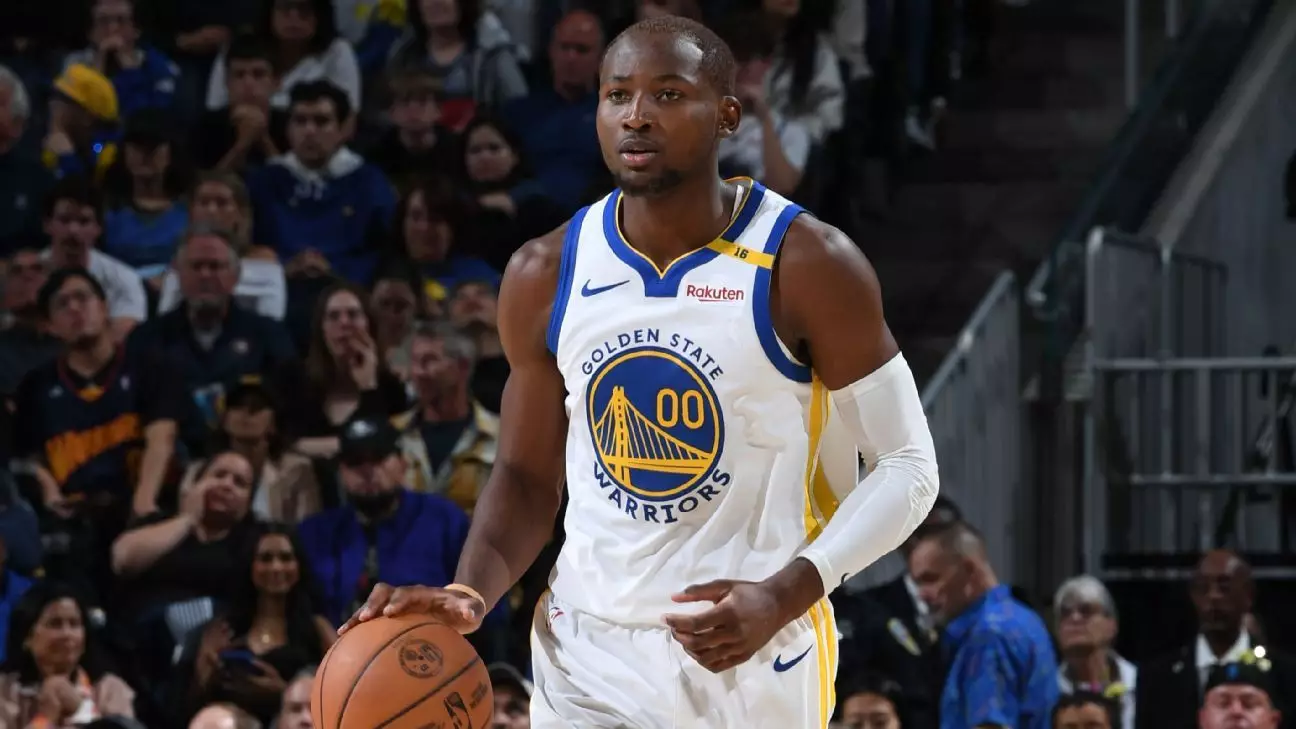In the fluctuating landscape of the NBA, coaching decisions often ignite passionate discussions among fans and analysts alike. The Golden State Warriors’ recent encounter with the New Orleans Pelicans spotlighted this dynamic, especially following the absence of two pivotal players—Stephen Curry and Andrew Wiggins. Coach Steve Kerr’s necessity to innovate a new starting lineup raised eyebrows and expectations, effectively testing the depth and adaptability of his roster.
Facing the Pelicans without Curry and Wiggins could have been a devastating blow. However, Kerr seized the challenge as an opportunity for experimentation, shifting the lineup not merely in response to missing talent but as part of a broader strategy. Instead of keeping Jonathan Kuminga in the starting position, he opted to insert Moses Moody, aiming for improved spacing on the court. This decision underscores a vital coaching philosophy: adaptability is key to success.
Kerr articulated his reasoning post-game, emphasizing the need for strategic combinations. By prioritizing mobility and spacing, he aimed to optimize the Warriors’ chances against a formidable opponent. While shifting Kuminga to the bench might seem like a demotion, it is essential to recognize that it was a tactical decision designed to enhance overall team performance rather than diminish an individual’s value.
The immediacy of communication in professional sports cannot be overstated. Kuminga received a text from Kerr regarding his new role, illustrating a modern approach to coaching. However, the lack of an in-depth conversation following the message did raise questions about the interpersonal dynamics within the Warriors. Kuminga’s acceptance of his situation is commendable; his professionalism shone through as he articulated his commitment to the team’s objectives.
Despite relinquishing his starting role, Kuminga performed admirably, contributing 17 points in 28 minutes—a testament to his ability to rise to the occasion regardless of his position. His comments reflect an understanding of the broader team dynamics and the professional mentality required to thrive in the high-pressure environment of the NBA. This adaptability is essential in a league where roster changes and injuries are commonplace.
Kuminga’s performance against the Pelicans not only showcased his skills but also served as a case study in the importance of efficient scoring and maintaining offensive momentum. Averaging eight points on just over 33% shooting in the preceding games, the marked improvement highlighted the impact of game flow and mental preparedness when players are placed in favorable positions.
Kuminga’s assertion that he played the same style as before—aggressively attacking the rim—is significant. The difference in output may have resulted from a more conducive environment for scoring rather than a fundamental change in his playstyle. This highlights an often-overlooked aspect of team dynamics: how lineups and player roles can directly affect individual performance.
The Warriors are navigating through a complex phase in their season, exacerbated by injuries to key players. Kerr’s strategy of using the first 30 games to evaluate his roster not only aims to solidify a competitive rotation but also underscores the organization’s commitment to development. The balancing act between immediate results and long-term player growth is challenging yet vital.
As the team anticipates the return of Curry, Wiggins, and De’Anthony Melton, one wonders whether Kuminga will maintain his bench role or return to the starting lineup. The rigors of an 82-game season demand thoughtful management of player stamina and potential, making Kerr’s focus on creating a deeply committed unit imperative.
Kerr’s adaptation to his lineup amidst challenges suggests a commitment not just to winning, but to fostering a cohesive and versatile team identity. As the season progresses, the Warriors are positioned to experiment and refine their strategies. The decisions made today could have lasting implications for the team’s success and cohesion in the future. As they navigate the path ahead, the emphasis on communication, adaptability, and performance will continue to shape their trajectory in the competitive landscape of the NBA.


Leave a Reply